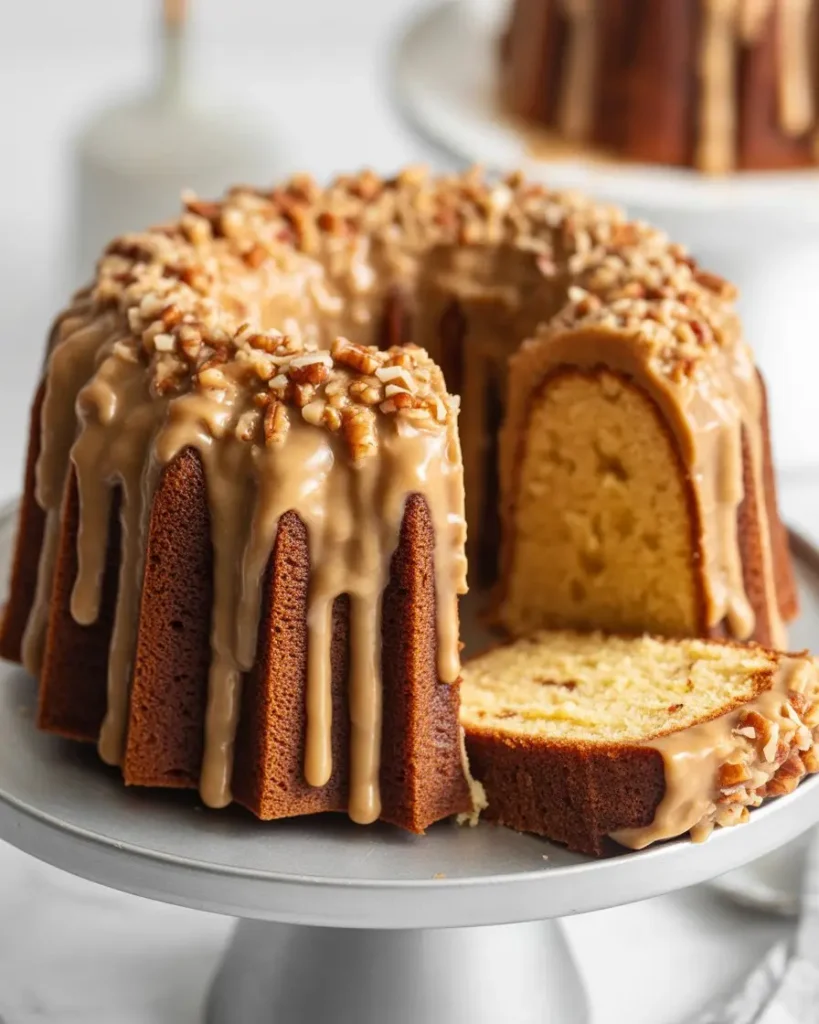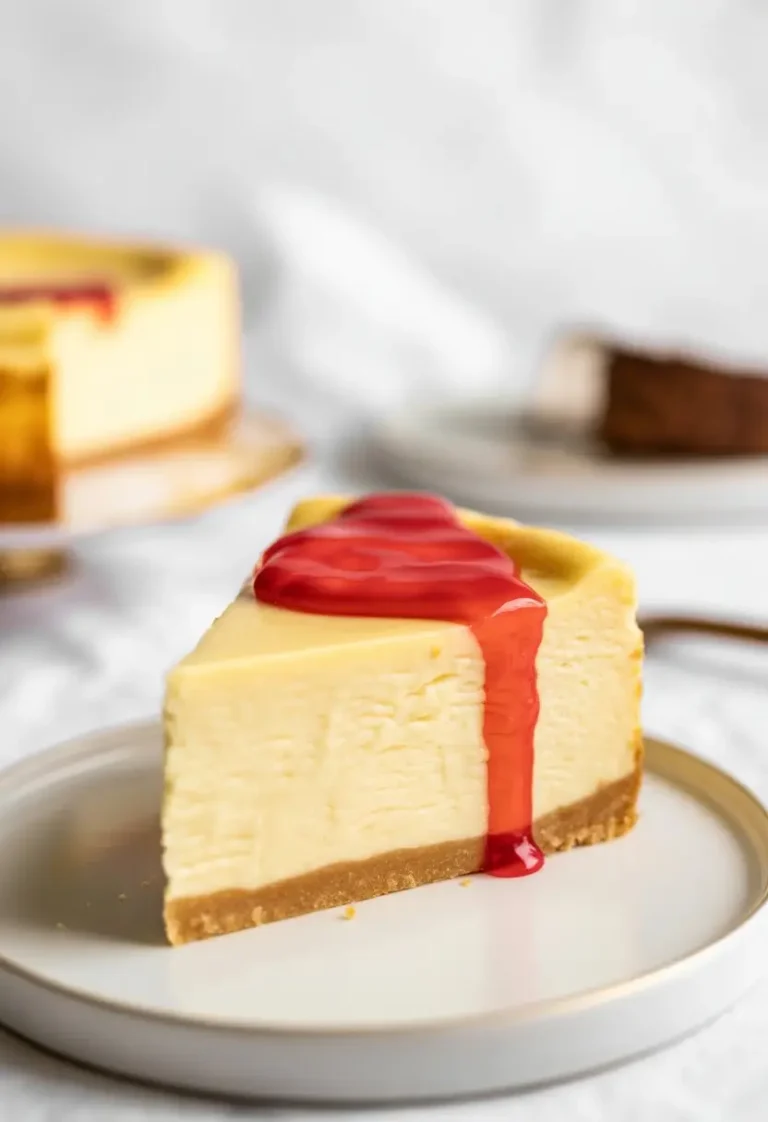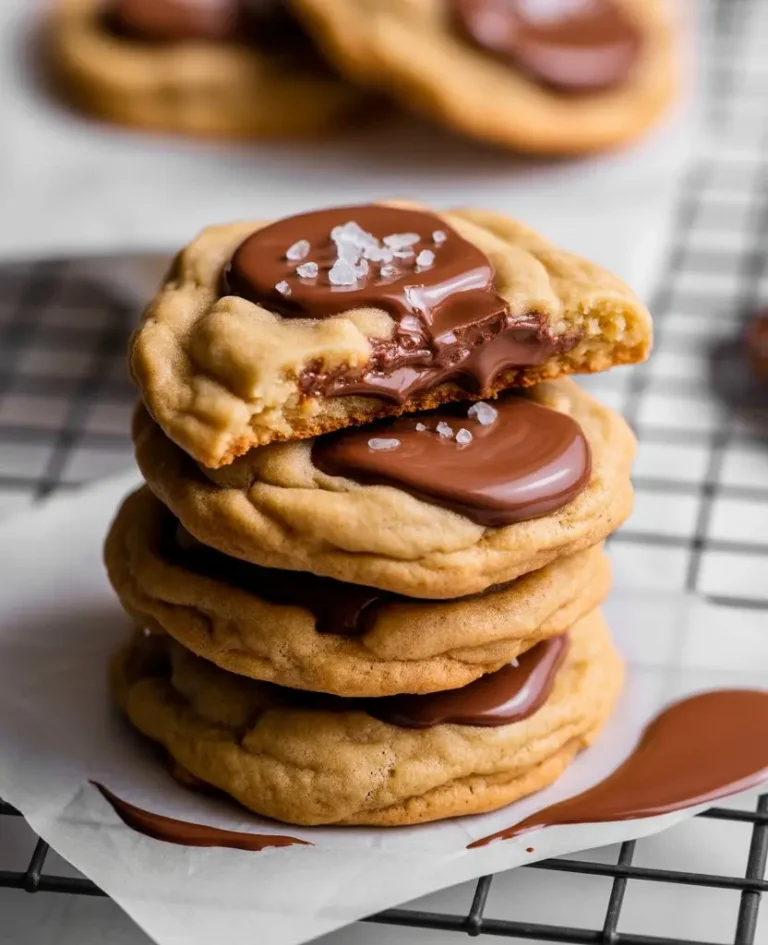
You know that feeling, standing in front of a bakery case, having a full-blown crisis? It’s the classic standoff: a dense, buttery pound cake versus a wild German chocolate cake with its glorious, gooey frosting.
It’s a truly unfair decision. So I decided to stop choosing. I mashed them together into one absolute showstopper of a cake, and honestly, it might be the best thing I’ve ever pulled out of my oven.
This isn’t just some franken-cake. It’s the perfect, tender crumb of a pound cake that acts as the foundation for that insane coconut-pecan topping. You get the heft, then you get the crunch. It’s the kind of dessert that quiets a room. And I’m going to walk you through it so you nail it on the first go.
What You’ll Need
For the Pound Cake
- Unsalted Butter: 1 ½ cups (3 sticks), soft
- Granulated Sugar: 3 cups
- Large Eggs: 6, room temp
- All-Purpose Flour: 3 cups
- Baking Powder: ½ teaspoon
- Salt: ½ teaspoon
- Buttermilk: 1 cup, room temp
- Vanilla Extract: 2 teaspoons
- Almond Extract: ½ teaspoon (optional, but do it)
For the Topping
- Evaporated Milk: 1 can (12 oz)
- Granulated Sugar: 1 cup
- Large Egg Yolks: 3
- Unsalted Butter: ½ cup (1 stick)
- Vanilla Extract: 1 teaspoon
- Sweetened Shredded Coconut: 1 ½ cups
- Pecans: 1 ½ cups, chopped & toasted
Required Tools
You don’t need a pro setup, just the basics. Having these ready makes everything go a lot smoother.
| Tool | Why You Need It |
|---|---|
| 10 or 12-cup Bundt Pan | For that classic shape. |
| Stand or Hand Mixer | To cream butter and sugar. |
| Medium Saucepan | For the glorious topping. |
| Wire Cooling Rack | A non-negotiable for cooling. |
Instructions to Perfection
Step 1: Prep the Oven and Pan
Get your oven rack in the middle and heat it to 325°F. Now, for the most critical part: grease your Bundt pan. I mean it. Get in every nook with butter or spray, then dust it with flour. Tap out the extra. This is your insurance policy.
Step 2: Mix the Cake Batter
Beat the soft butter and sugar on medium-high for a solid 5-7 minutes. It should get pale and super fluffy. This is where you whip in the air that makes the cake tender.
Turn the speed to medium-low. Add eggs one by one, mixing well after each. Scrape the bowl. Then, mix in the vanilla and almond extracts.
In a separate bowl, whisk the flour, baking powder, and salt. Now, alternate adding the dry mix and the buttermilk to your main bowl, starting and ending with the dry. Mix on low only until the flour is gone. Don’t go crazy here, or you’ll get a tough cake.
Step 3: Bake That Beauty
Pour the batter into your prepped pan and smooth the top. Bake for 65-80 minutes. Start checking at 65. A skewer stuck in the middle should come out clean.
Let it cool in the pan for exactly 15 minutes. No more, no less. Then, confidently flip it onto a wire rack to cool completely. Give it at least 2 hours.
Step 4: Make the Topping
While the cake cools, whisk the evaporated milk, sugar, and egg yolks in a saucepan. Add the butter. Cook over medium heat, stirring constantly, until it’s thick enough to coat a spoon, about 10-12 minutes. Don’t walk away, or you’ll have scrambled eggs.
Take it off the heat. Stir in the vanilla, coconut, and toasted pecans. Let this cool for about 20 minutes so it thickens up but is still spreadable.
Step 5: Put It All Together
Once the cake is totally cool, spoon the warm topping over the top. Let it drip down the sides naturally. It’s supposed to look rustic and amazing. Let the topping set for about 30 minutes before you slice into it.
Pro Tips From My Kitchen
- Room Temp is Real: I know, I sound like a broken record. But cold butter and eggs don’t mix right. They create a curdled, greasy mess. Let them sit on the counter for an hour. It’s worth it.
- Toast Your Pecans: Don’t skip this. A few minutes in a hot oven wakes up the oils in the nuts. It takes them from just okay to deeply nutty and crunchy. Big flavor upgrade.
- Patience with Cooling: That 15-minute wait in the pan is crucial. It lets the cake firm up so it doesn’t crumble when you flip it. Cooling it completely before frosting keeps the topping from turning into a sad, melted puddle.
- Don’t Beat Up the Flour: Seriously, once the flour goes in, your mixer should be on low. Mix just until it disappears. Over-mixing develops gluten and turns your tender cake into a tough brick.
A Few Riffs and Swaps
Feel free to mess with this. That’s the fun part.
- Nut Swap: Toasted walnuts or macadamia nuts would work great here.
- Extra Chocolate: A drizzle of melted semi-sweet chocolate over the top never hurt anyone.
- Boozy Kick: A splash of bourbon or dark rum in the topping? Oh, yes.
- Pan Swap: No Bundt? Two 9×5 loaf pans will do. Just check on them sooner, around 50 minutes.
FAQs
Q1. Why is my pound cake dry?
Ans: Almost always one of two things: you over-baked it, or you packed too much flour in your measuring cup. Spoon flour into the cup, don’t scoop.
Q2. My cake stuck to the pan. Help!
Ans: Ah, the classic Bundt betrayal. It means you missed a spot when greasing and flouring. Or you let it cool too long in the pan, and the sugar glued it down.
Q3. The topping is too runny. What now?
Ans: Just put it back on the heat for a few more minutes. Keep stirring. It’ll get there. It also thickens a ton as it cools down, so don’t panic.
So, There You Have It
This cake is a project, for sure, but it’s a fun one. And the payoff is a dessert that genuinely stops conversations. The buttery cake and that crunchy, gooey topping are a combination that just works on every level.
Go make it. And let me know how it turns out—tell me the good, the bad, and the “my-kitchen-is-a-disaster-but-this-is-amazing” stories. That’s the best part.






